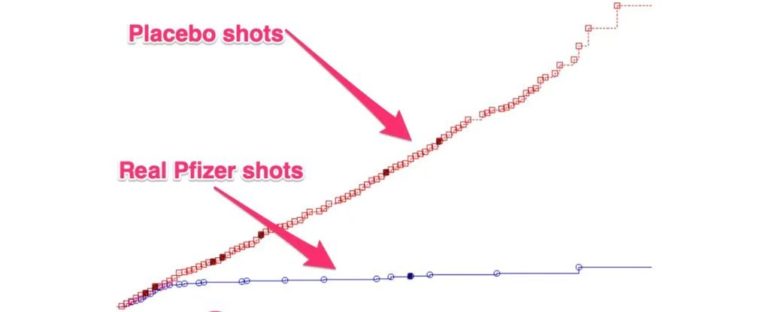The US Food and Drug Administration on Tuesday released safety and efficacy data about Moderna’s coronavirus vaccine, which shows the vaccine works very well at preventing COVID-19 infections, especially some of the most dangerous cases.
The new data on Moderna’s shots comes just a day after Pfizer’s COVID-19 vaccine started going into arms across America.
But the FDA’s assessment of Moderna’s shot – which is likely to become the country’s second authorised coronavirus vaccine – was not quite as glowing as it was for Pfizer’s, even though the vaccine is nearly identical when it comes to preventing infections, at 94 percent.
Moderna’s vaccine starts protecting people after 14 days
Take a look at this graph. It shows just how well the group of more than 15,000 study participants who got Moderna’s real shot were protected from COVID-19 infections, when compared to the more than 15,000 people in the study who got a placebo (useless) shot:
(FDA)
How it compares to Pfizer’s graph
Moderna’s vaccine chart looks quite a bit like Pfizer’s did, when that vaccine was up for FDA authorization last week.
Moderna’s vaccine, like Pfizer’s, seemed to start giving people protection from infection roughly 14 days after their first shot.
But it’s tough to say how robust that one-shot protection would be on its own, because almost everybody in Moderna’s study was administered a second shot, 28 days after their first. (For Pfizer there was also a second shot, 21 days later.)

No severe COVID-19 cases in the vaccinated group
In the Moderna group that was vaccinated against COVID-19, there were only 11 cases of COVID-19 recorded, once the two shots had ample time to take effect (14 days after the second vaccination). In the study control group, during the same study period (which was roughly two months long) 185 people got sick with COVID-19.
There were also no cases of severe COVID-19 among vaccinated individuals. The control group had 30 very sick COVID-19 positive participants, and one death.
Side effects in the study were generally mild, but 17 percent of participants reported severe issues after vaccination, including headaches, fever, and pain, with some of these effects lasting upwards of two to three days.
Severe side effects in Moderna’s trial were more common in the younger study participants, under the age of 65. Some people in the coronavirus vaccine studies (both Pfizer’s and Moderna’s) have even taken a day off work to recover, according to the San Diego Union Tribune.
It’s likely that the FDA will issue emergency authorization for Moderna’s vaccine, making it the second available shot to fight the coronavirus pandemic. That EUA will likely come this Friday, sources told The New York Times.
This article was originally published by Business Insider.
More from Business Insider:



